Complete Solutions to Single Correct of chapter COULOMB LAW AND ELECTRIC FIELD of Class 12 book with complete answers and questions
| Class 12 | PHYSICS |
| Chapter | COULOMB LAW AND ELECTRIC FIELD |
| CENGAGE PHYSICS | Single Correct |
| Number Of Questions | 47 |
| Academic Year | 2023-24 |
Three charged paricles are placed on a straight line as shown in fig. `q_(1)` and `q_(2)` are fixed but `q_(3)` can be moved. Under the action of the forces from `q_(1),q_(2)` and `q_(3)` is in equilbrium. What is the relation between `q_(1)` and `q_(2)`.

View SolutionTwo particles A and B having charges ` 8.0 xx 10 ^(-6) C` and `-2.0 xx 10(-6) C` respectively are held fixed with a. separtion of 20cm. Where should a thired charged. particle be placed so that it dose not experience a net electric force?.
View SolutionFive balss numbered 1,2,3,4,and 5 are suspended using separated threads. The balls (1,2),(2,4) and (4,1) show electrostatic attraction while balls (2,3) and (4,5) show repulsion. Therefore, ball 1 must be
View SolutionTwo point charges repel each other with a force of 100N. One of the charges is increased by 10% and the other is reduced by 10% . The new force of repulsion at the same distance would be
View SolutionThreee charges `+Q_(1),+Q_(2)` and q are placed on a straight line such that q is somewhere in between `+Q_(1)`and `Q_(2)`. If this system of charges is in equlibirium what should be the magnitude and sign of charge q?
View SolutionAn isolated charge `q_(1)` of mass m is suspended freely by a thread of length l. Another chaarges `q_(2)` is braought near it `(rgtgtl)`. When `q_(1)` is in equilibrium tension in thread will be
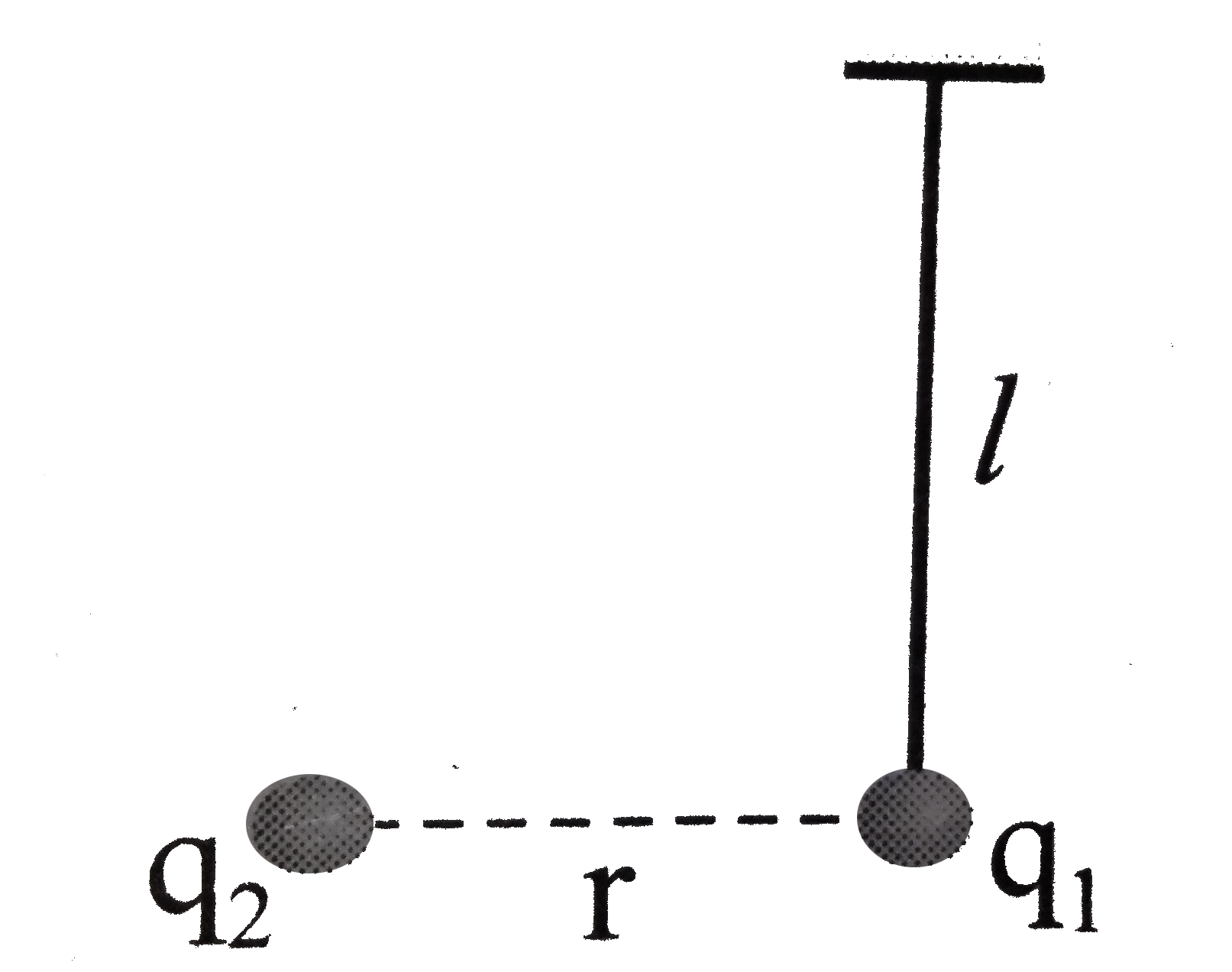
View SolutionA positively charged ball hangs from a long silk thread. Electric filed at a certain point (at the same horizontal level of ball) due to this charge is E. Let us put a positive test charge `q_(0)` at this point and measure `F//q_(0)` on this charges. then E
View SolutionTwo particle of masses in the ration 1:2 with charges in the ratio 1:1, are palced at rest in a uniform electric field. They are relesaded and allowed to move for the same time. The ratio of their kinetic energies will be finally
View SolutionThree equal charges, each `+q ` are placed on the corners of an equilatreal triangel . The electric field intensity at the centroid of the triangle is
View SolutionA point charge of `100mu C` is placed at `3 hat j+4 hat j m`. Find the electric field intensity due to this charges at a point located at `9 hat j+12 hat j m`.
View SolutionTwo charge `Q_(1)=18muC` and `Q_(2)=-2 mu C` are separted by a distance R, and `Q_(1)` is on the left off `Q_(2)`. The distance of the point where the net electric field is zero is
View SolutionAn oil drop, carrying six electronic charges and having a mass of `1.6xx10^(-12)g`, falls with some terminal velocity in a medium. What magnitude of vertical electric field is required to make the drop move upward with the same speed as it was formerly moving down ward with ? Ignore buoyancy.
View SolutionFive point charges, +q each are placed at the five vertices of a regular hexagon. The distance of the center of the hexagon from any fo the vertices is a. the electric field at the center of the hexagon is
View SolutionA ring of charge with radius `0.5m` has `0.002 pi` m gap. If the ribg carries a charge of `+1 C` the electric field at the center is
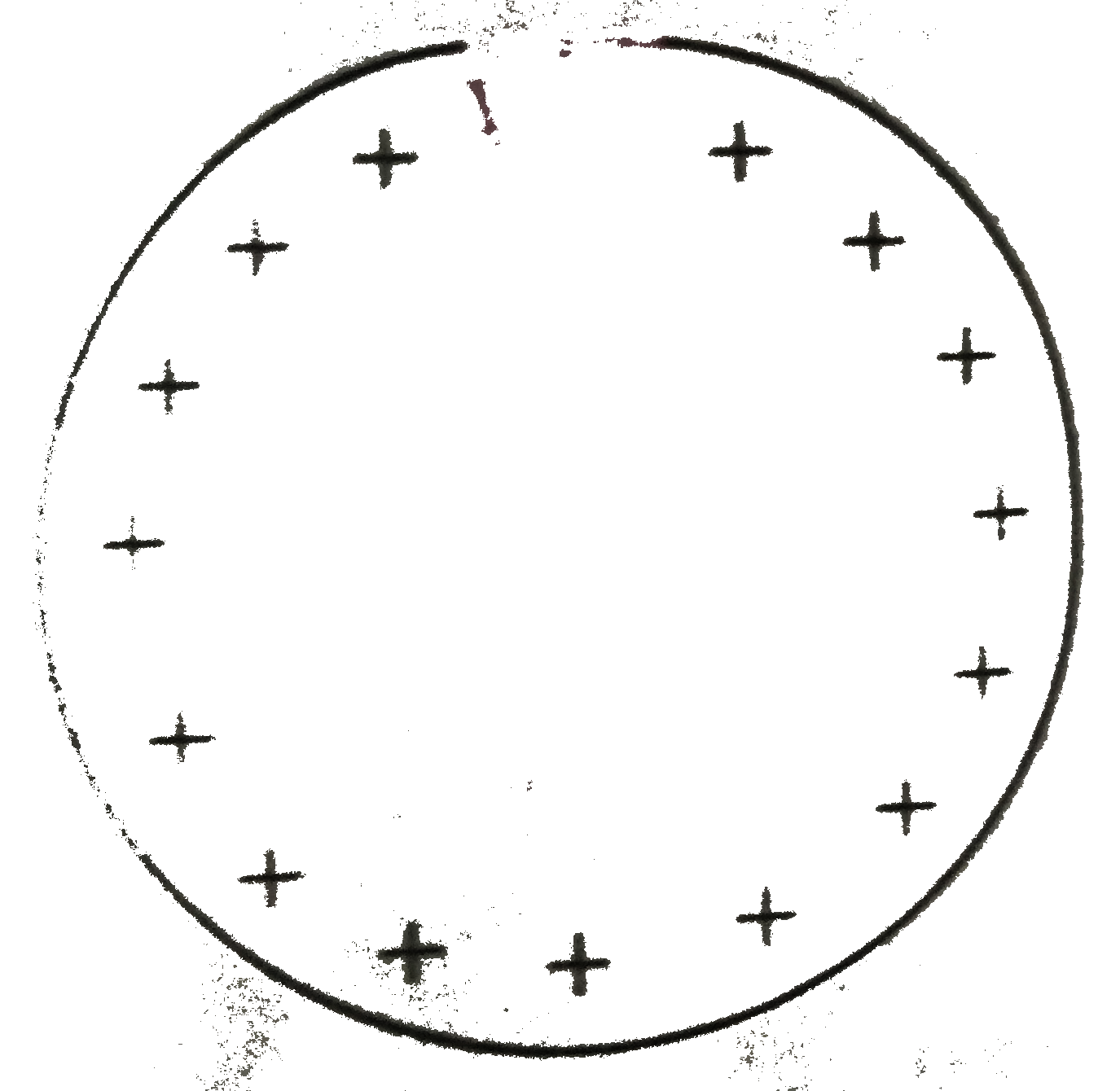
View SolutionA block of mass m containing a net negative chage `-q` is placed on a froctionless horizontal tabe and is connected to a wall through an unstreached spring of spring constant k. If the horizontal electric field E parallel to spring is switched on , then the maximum compression of the spring is
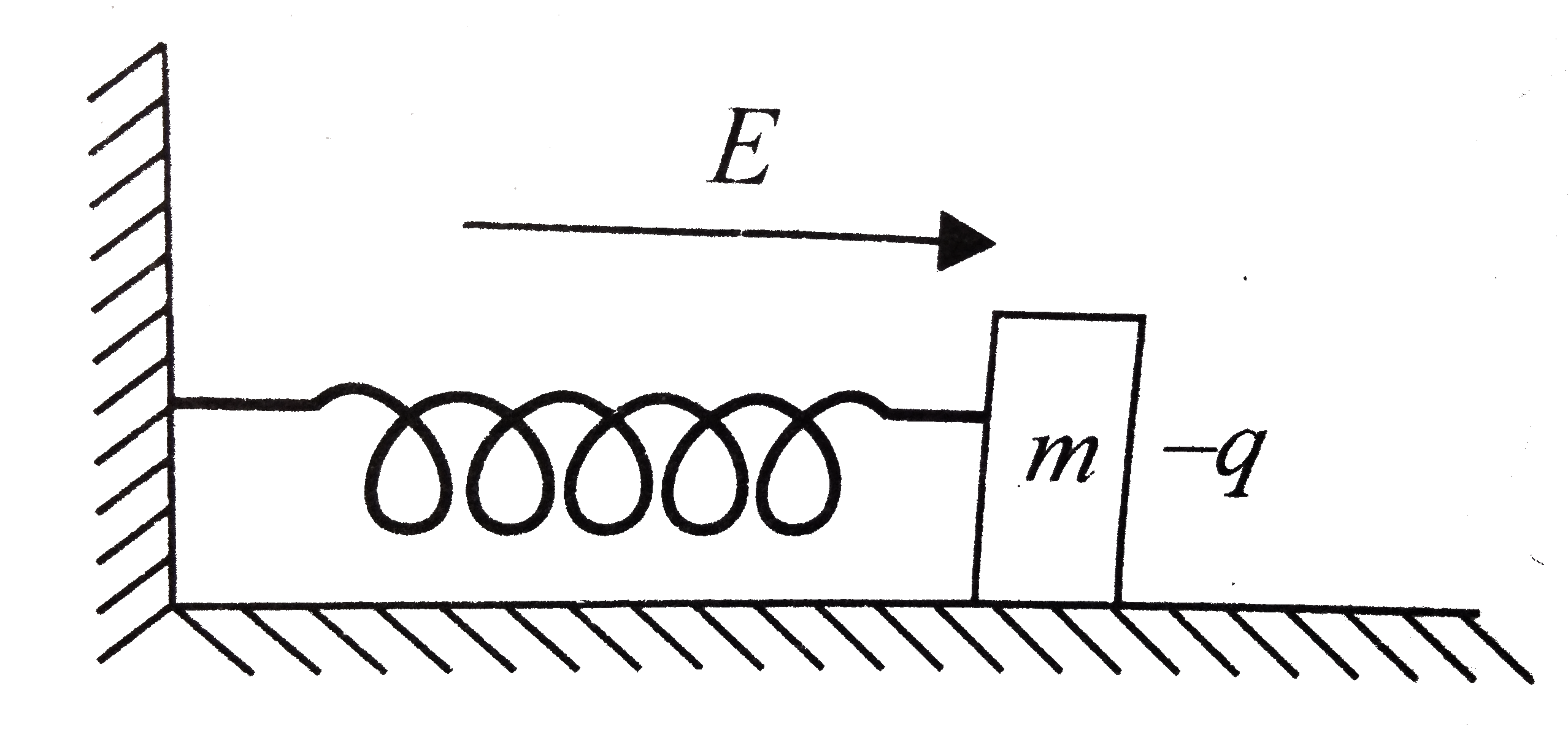
View SolutionThree positive charges of equal magnitude q are placed at the vertices of and equilateral triangle of side l. How can the system of charges be placed in equilibrium?
View SolutionIn fig two equal positive point charge `q_(1)=q_(2)=2.0mu C`. Interact with a third point charge `Q=4.0 mu C`. The magnitude as well as direction of the net force on Q is
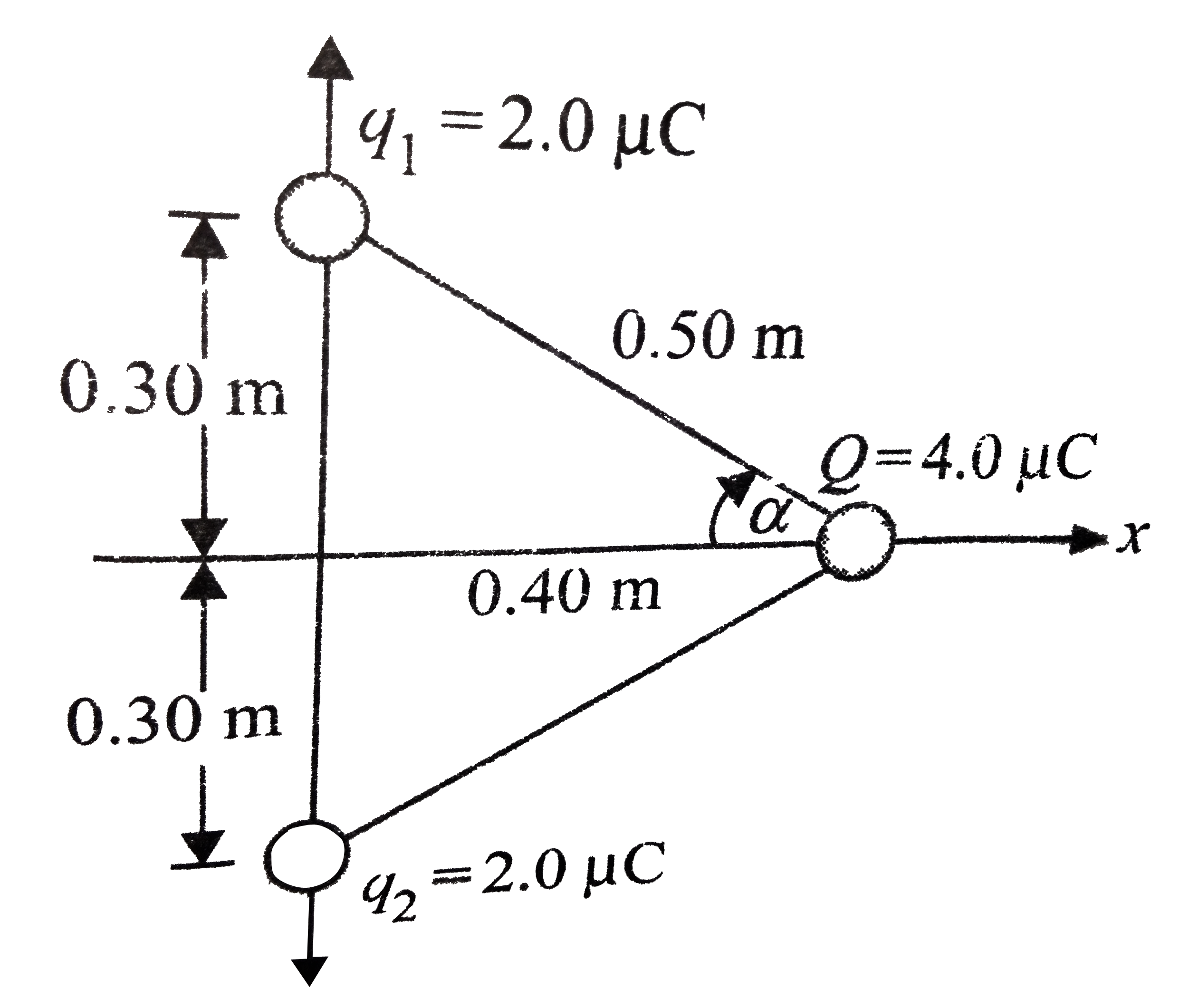
View SolutionThree identical spheres, each having a charge q and radius R. are kept in such a way that each touches the other two. The magnitude of the electric force on any sphere due to the other two is
View SolutionFive point charges, each of value +q coul, are placed on five vertices of a regular hexagon of isde L meters. The magnitude of the force on the point charge of value -q coul, placed at the centre of the hexagen is…………….
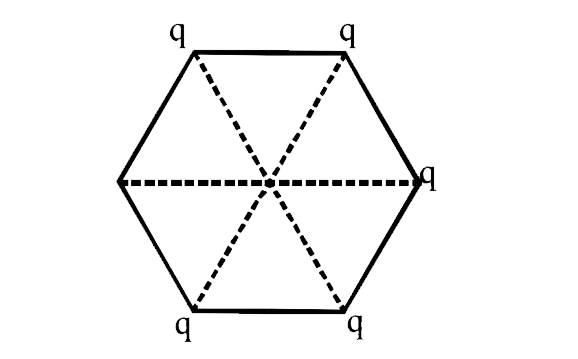
View SolutionFour equal point charges, each of magnitude `+Q`, are to be placed in equilibrium at the corners of a square. What should be the magnitude and sign of the point charge that should be placed at the center of the square to do this job?
View SolutionA point charge `q = - 8.0 nC` is located at the origin. Find the electric field vector at the point `x = 1.2 m, y = -1.6 m`.
View SolutionA positive point charge `50mu C` is located in the plane xy at a point with radius vector `vecr_(0)=2hat(i)+3hat(j)`. The electric field vector `vec(E )` at a point with radius vector `vec(r )=8 hat(i)-5 hat(j)`, where `r_(0)` and r are expressed in meter, is
View SolutionFour identical charges Q are fixed at the four corners of a square of side a. The electric field at a point P located symmetrically at a distance `a//sqrt(2)` from the center of the square is
View SolutionA thin glass rod is bent into a semicircle of radius r. A charge +Q is uniformly distributed along the lower half, as shown in fig. The electric field E at P, the center of the semicircle, is
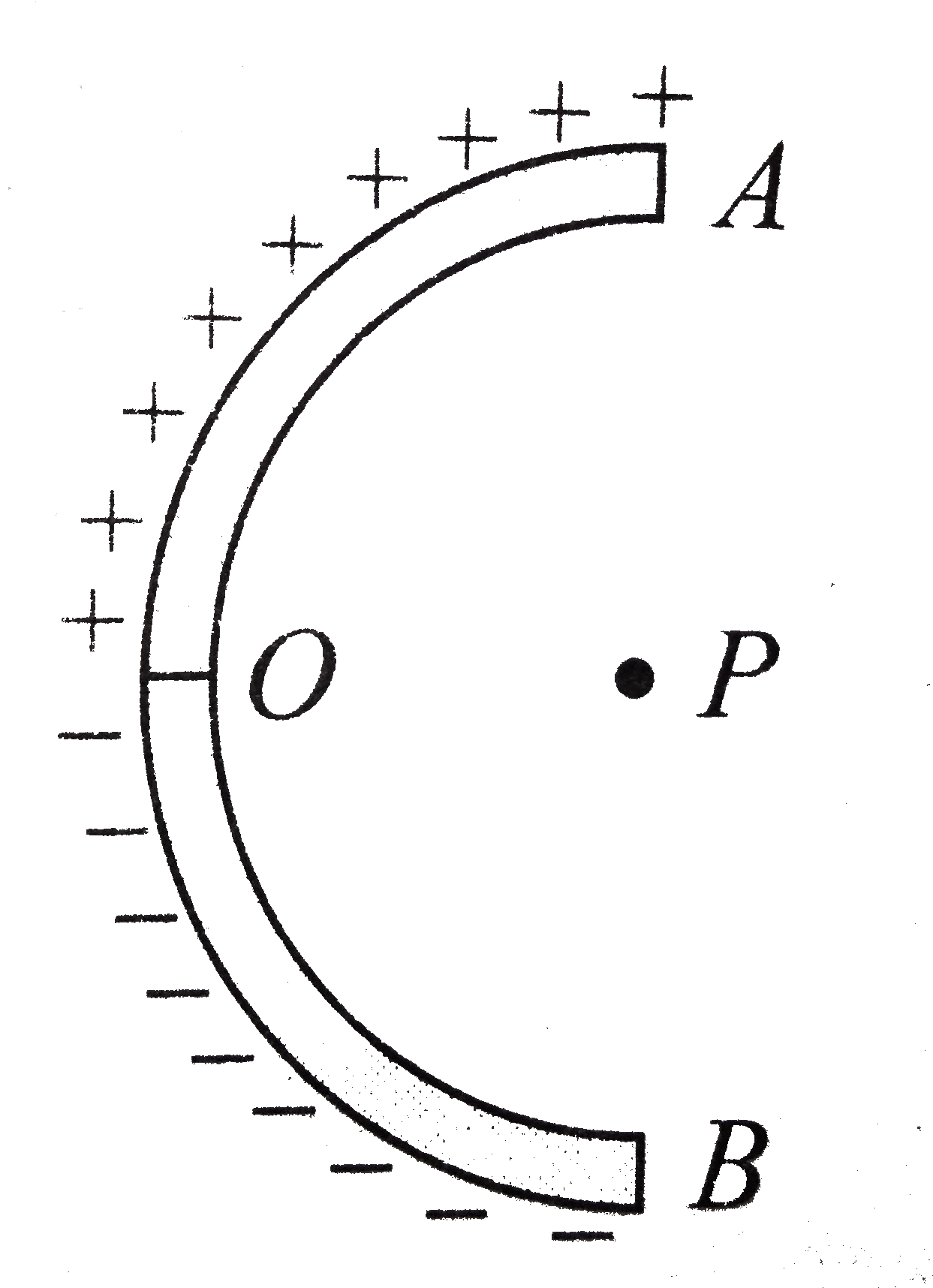
View SolutionA system consits fo a thin charged wire ring of radius `R` and a very long uniformly charged thread oriented along the axis of the ring, with one of its ends coinciding with the centre of the ring. The total charge of the ring, with one of the ring so equal to `q`. The charge of the thread (per unit length) is equal to `lambda`. Find the interaction froce between the ring and the thread.
View SolutionFind the electric field vector at P (a,a,a) due to three infinitely long lines of charges along the x-, y- and z-axis, respectively. The charge density i.e. charge per unit length of each wire is `(lamba)`,
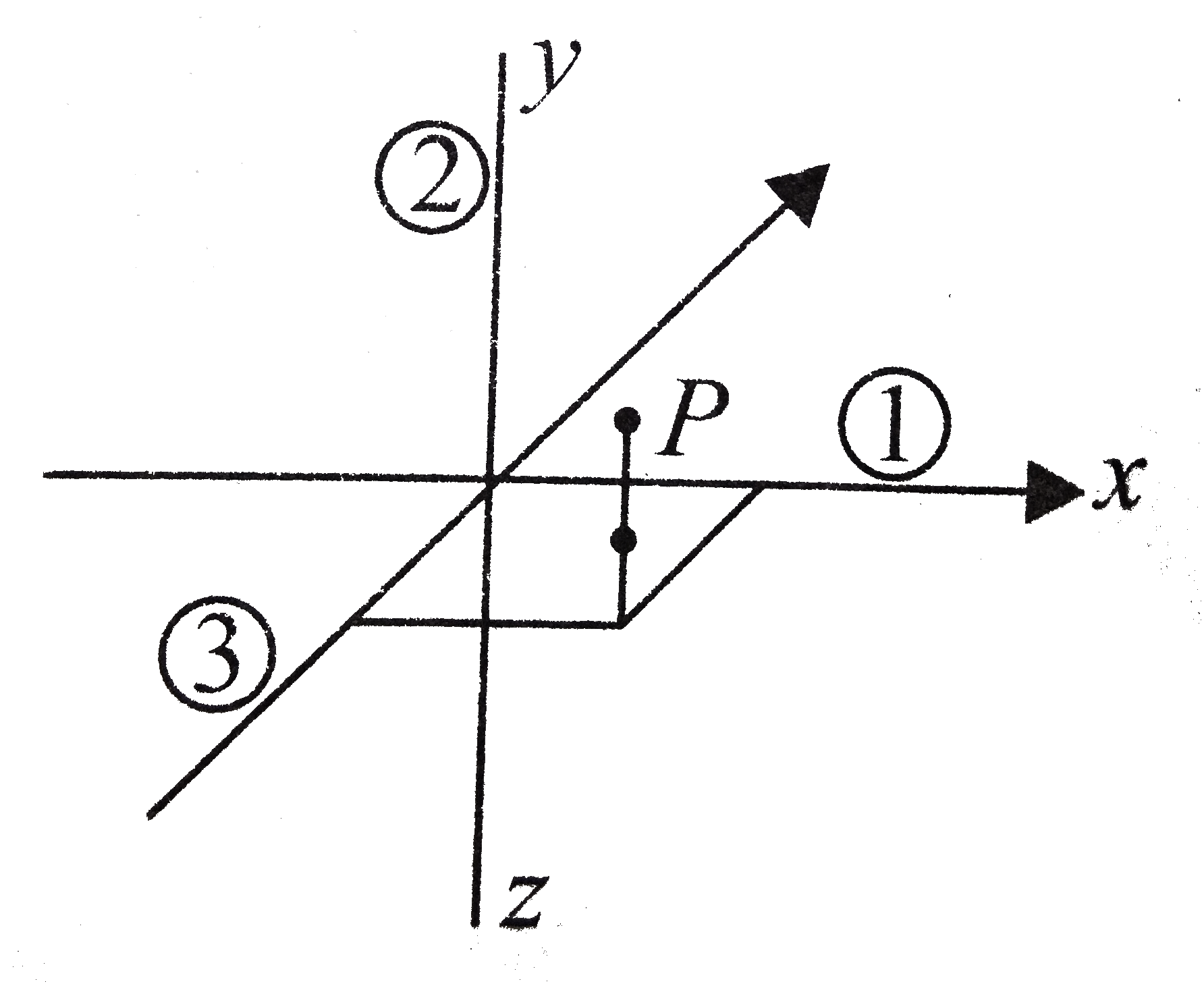
View SolutionA particle of mass m and charge -q moves diametrically through a uniformily charged sphere of radius R with total charge Q. The angular frequency of the particle's simple harminic motion, if its amplitude lt R, is given by
View SolutionA particle of mass m carrying a positive charge q moves simple harmonically along the x-axis under the action of a varying electric field E directed along the x-axis. The motion of the particle is confined between x=0 and x=2l. The angular frequency of the motion is `omega`. Then which of the following is correct ?
View SolutionA circular ring carries a uniformly distributed positive charge and lies in the xy plane with center at the origin of the cooredinate system. If at a point (0,0,z) the electric field is E, then which of the following graphs is correct?
View SolutionFour point charge are placed at the corners of a square with diagonal 2a as shown. What is the total electric field at the center of the squre?

View SolutionFour electrical charge are arranged on the corners of a 10cm square as shown.
What would be the direction of the resulting electric field of the resulting electric field at the center point P?
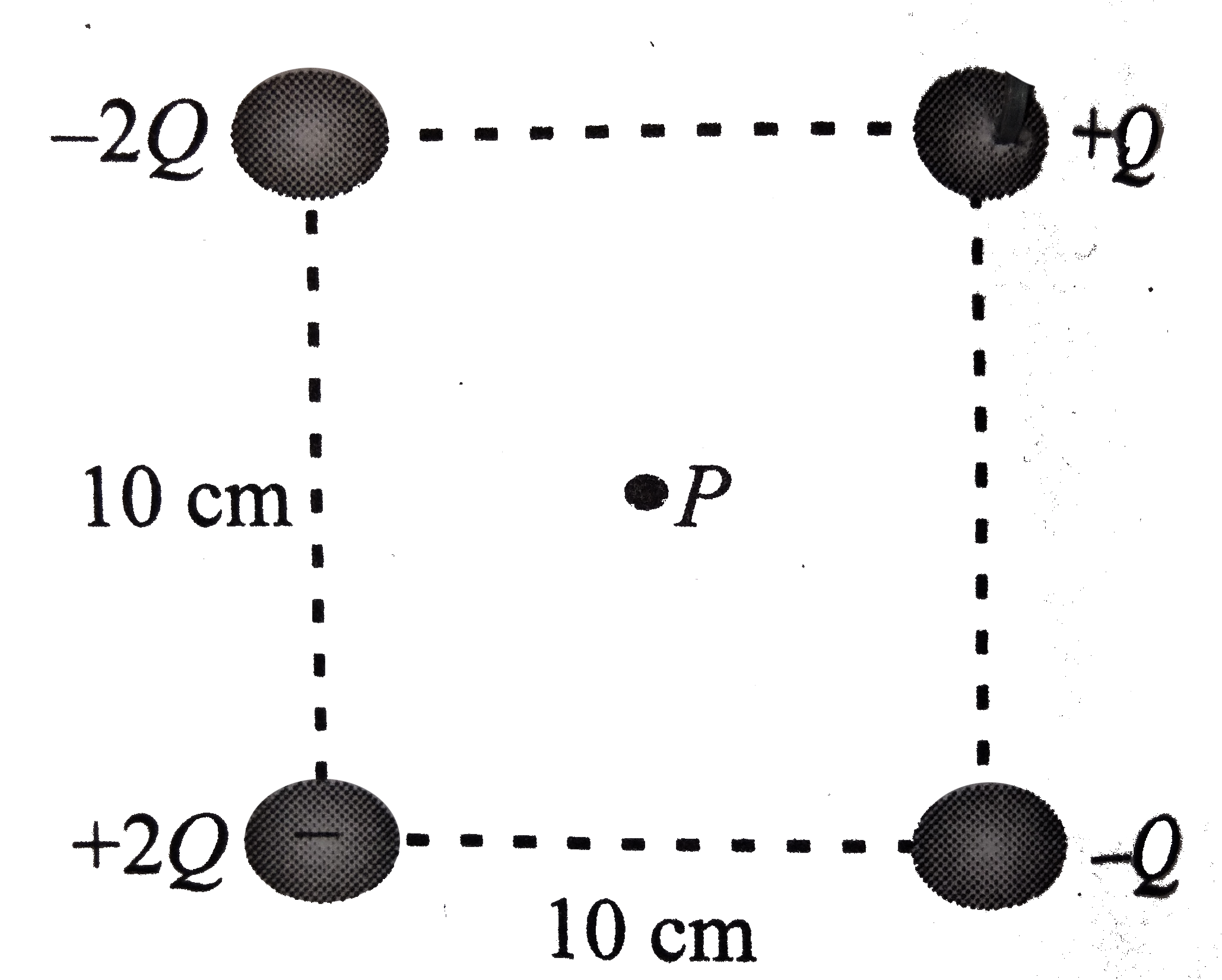
View Solutiontwo pith balls each with mass m are suspended from insulating threads. When the pith balls are given equal positive charge Q, they hang in equilibirum as shown. We now increase the charge on the left pith ball from Q to 2Q while leaving its mass essentially unchanged. Which of he following diagrams best represent the new equilibrium configuration?
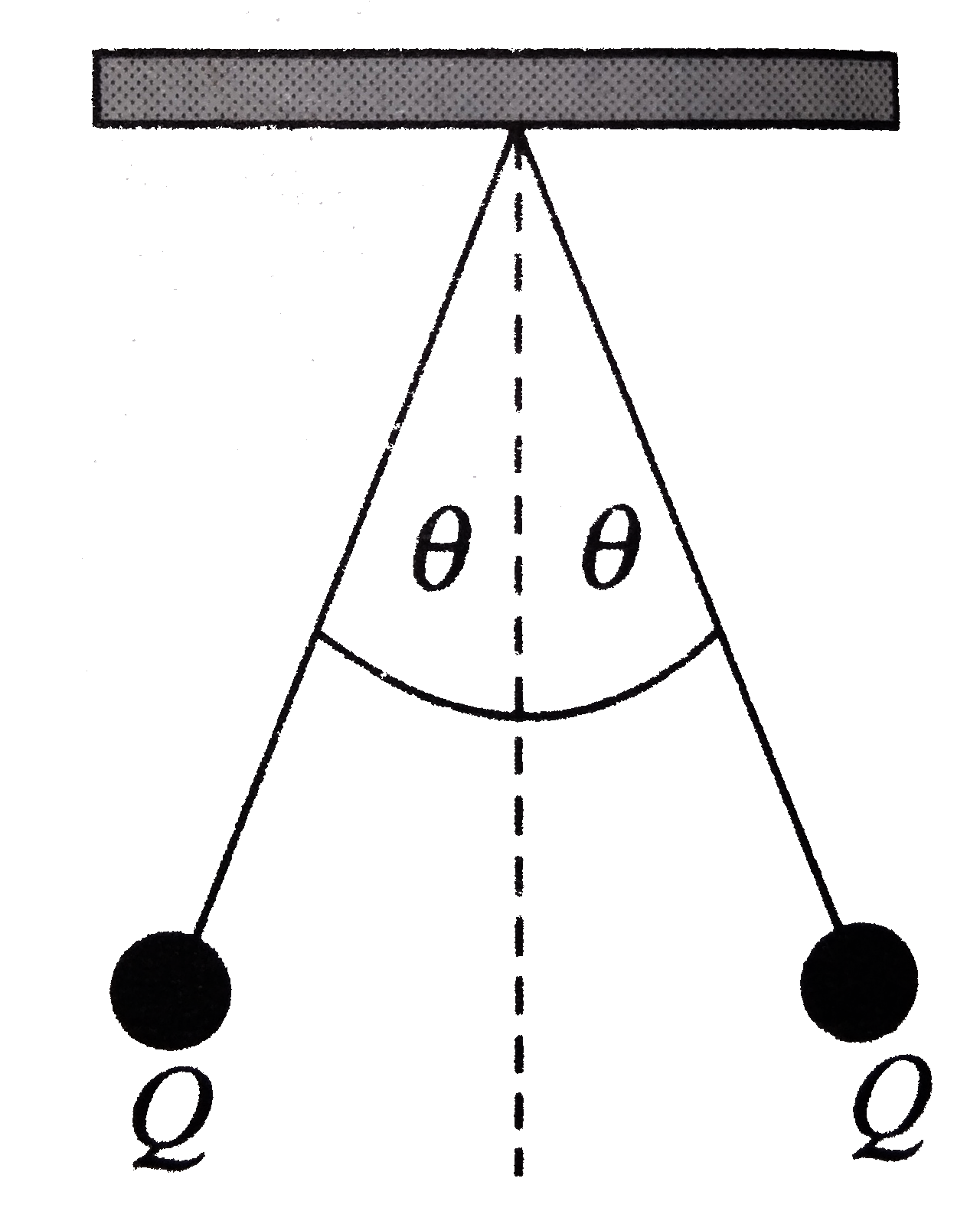
View SolutionThree positive charges of equal magnitude q are placed at the vertices of and equilateral triangle of side l. How can the system of charges be placed in equilibrium?
View SolutionThe maximum electric field at a point on the axis of a uniformly charged ring is `E_(0)`. At how many points on the axis will the magnitude of the electric field be `E_(0)//2`.
View SolutionAn electric charged q exerts a force F on a similar electric charge q swparated by a distance r. A third charge `q//4` is placed midway between the two charges. Now the force F will
View SolutionThe electric field intensity at the center of a uniformly charged hemispherical shell is `E_(0)`. Now two portions of the hemisphere are cut from either side, and the remaining portion is shown in fig. If `alpha=beta=pi//3`, then the electric field intesity at the center due to the remaining portion is

View SolutionA block of mass ma is suspended vertically with a spring of spring constant k. The block is made to oscillate in a gravitation field. Its time period is found to be T. Now the space between the plates is made gravity free, and an electric field E is produced in the downward direction. Now the block is given a charge q. the new time period of oscillation is
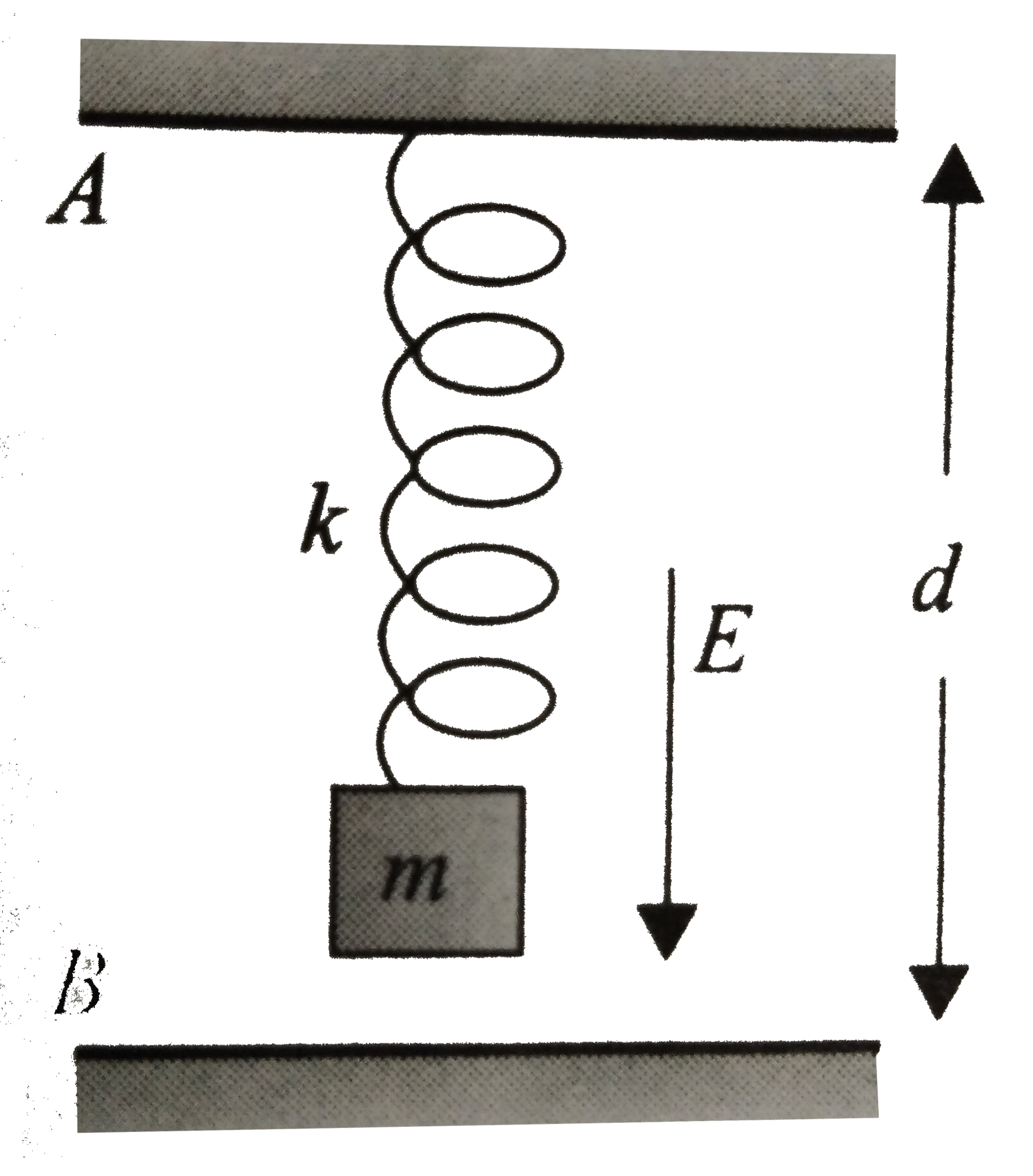
View SolutionWhich of the following four figures correctly show the forces that three charged particles exert on each other.
 ,
,
View SolutionAn electroscope is given a positive charge, causing its foil leaves to separate. When an object is brought near the top plate of the electroscope, the fiols separated even further. We conclude.
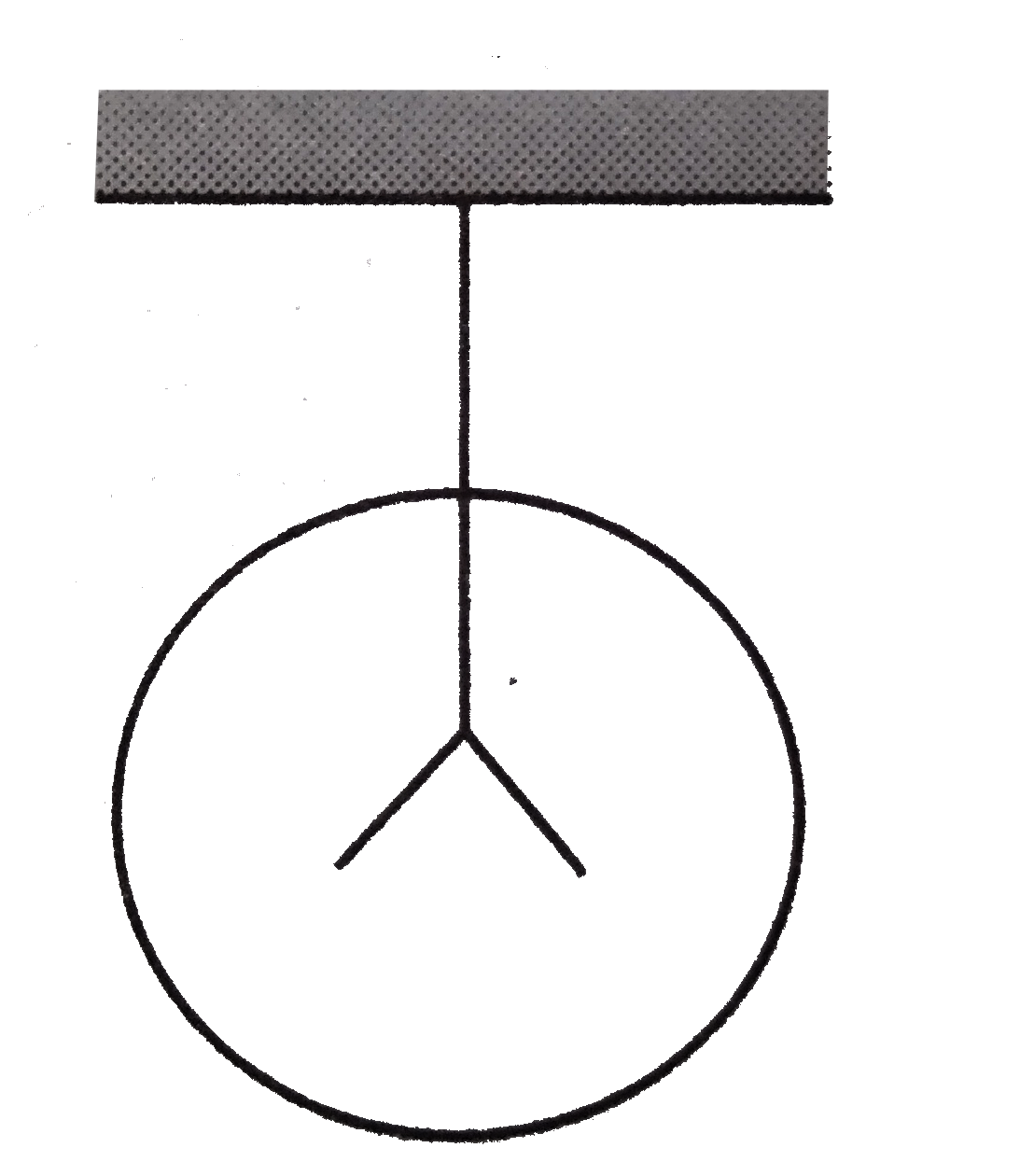
View SolutionA point negative charge -Q is placed at a distance r from a dipole with dipole moment P in the xy plane as shown in fig. The x-component of force acting on the charge-Q is
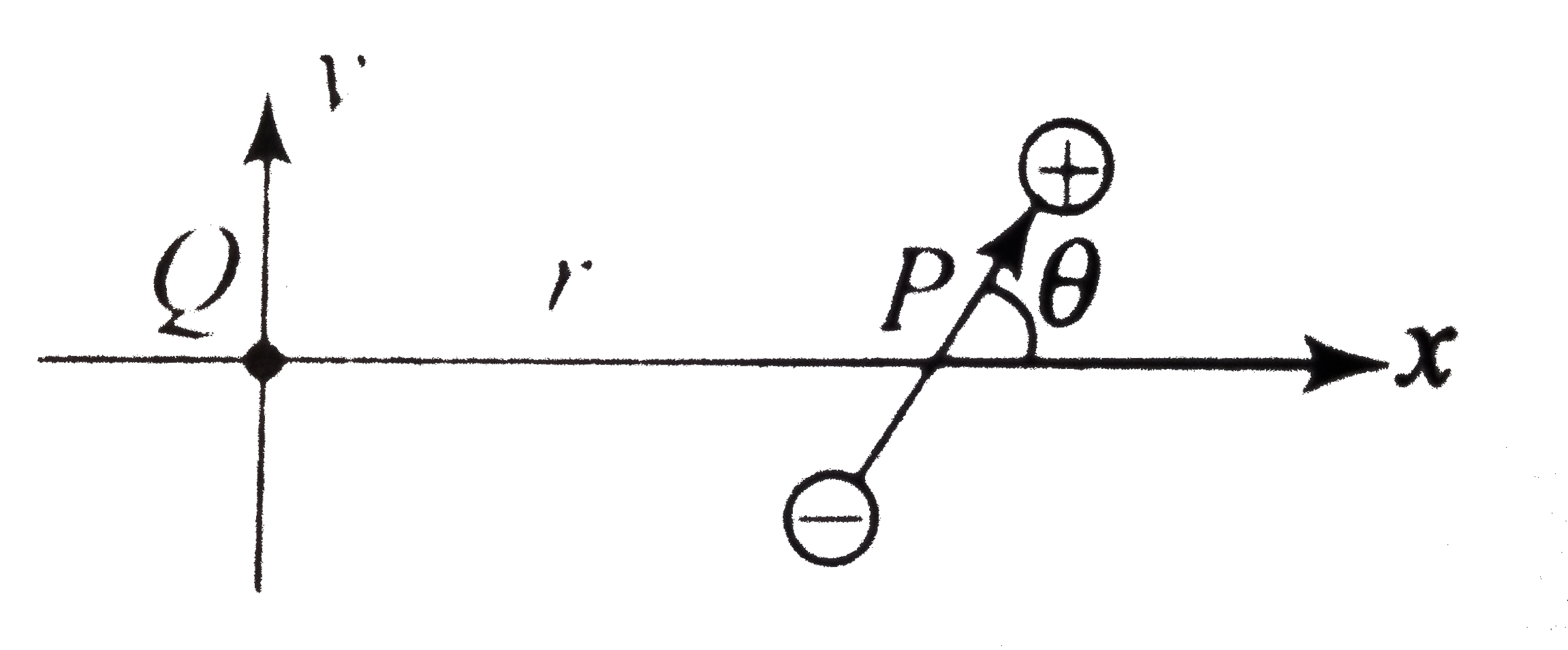
View SolutionTwo charges `q_(1)` and `q_(2)` are kept on `x`-axis and electric field at different points an `x`-axis is plotted against `x`. Choose correct statement about nature and magnitudes of `q_(1)` and `q_(2)`
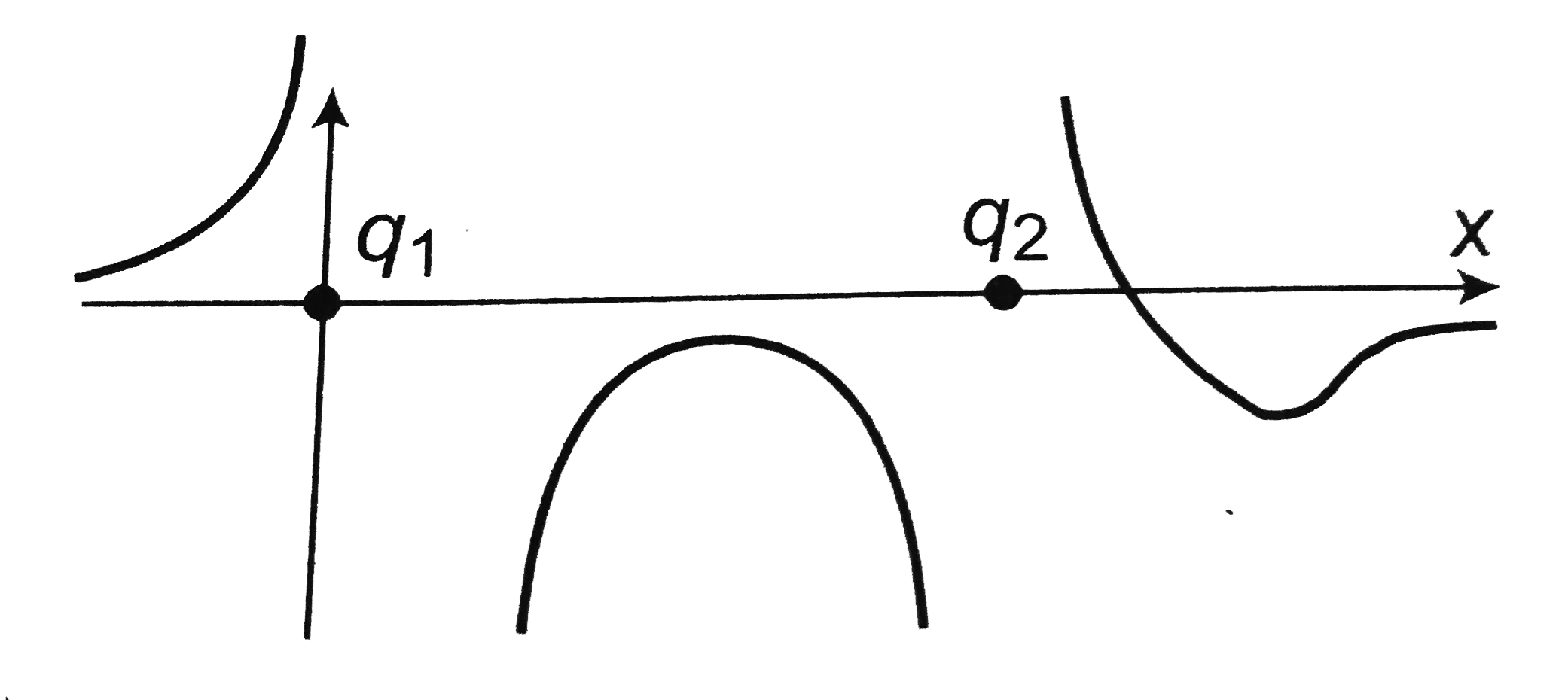
View SolutionThree identical point charges, each of mass m and charge q, hang from three strings as shown in fig. The value of q in term of m, L, and q is

View SolutionA and B are two points on the axis and the perpendicular bisector, reapectively, of and electric dipole. A and B are far away from the dipole and at equal distance from it. The fields at A and B are `vecE_(A)` and `vecE_(B)`. Then
View SolutionA metallic shell has a point charge 'q' kept inisde its cavity. Which one of the following diagrams correctly represents the electric lines of forces?
View SolutionThe direction `(theta)` of `vec(E)` at point P due to uniformly charged finite rod will be
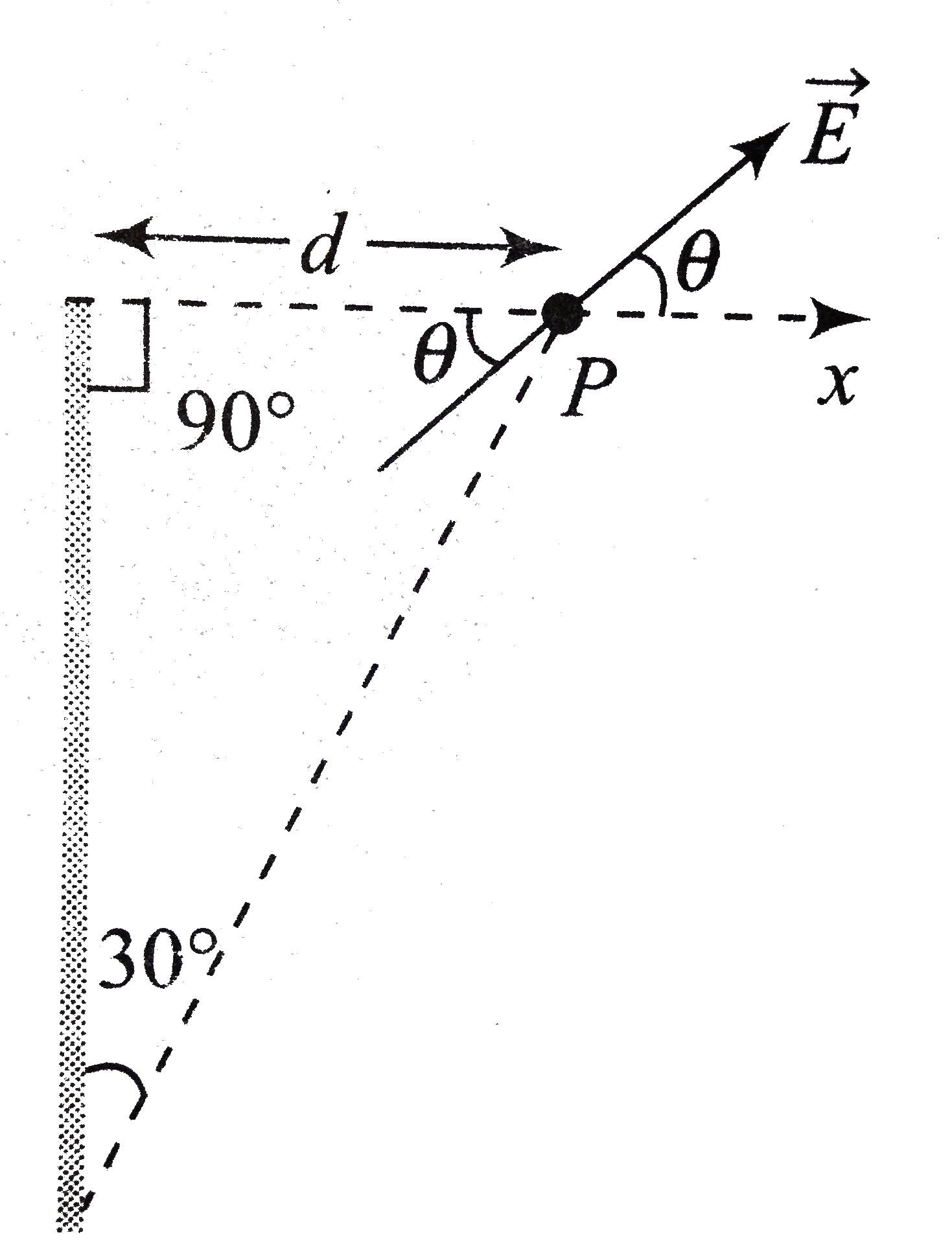
View SolutionFind the force experienced by a semicircular rod having a charge q as shown in fig. Radius of the wire is R, and the line of charge with linear charge density `lambda` passes through its center and is perpendicular to the plane of wire.
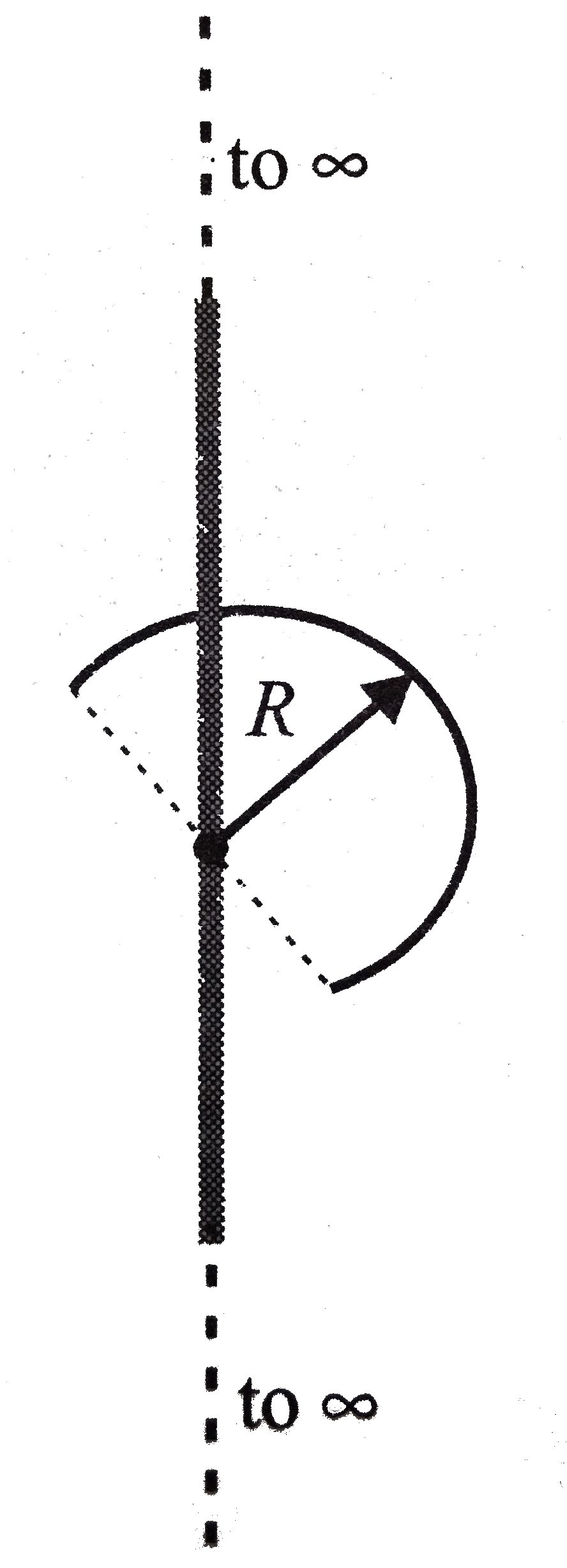
View SolutionA large sheet carries uniform surface charge density `sigma` . A rod of length 2l has a linear charge density `lamba` on one half and `-lambda` on the second half. The rod is hinged at the midpoint O and makes an angle `theta` with the normal to the sheet. The torque experience by the rod is
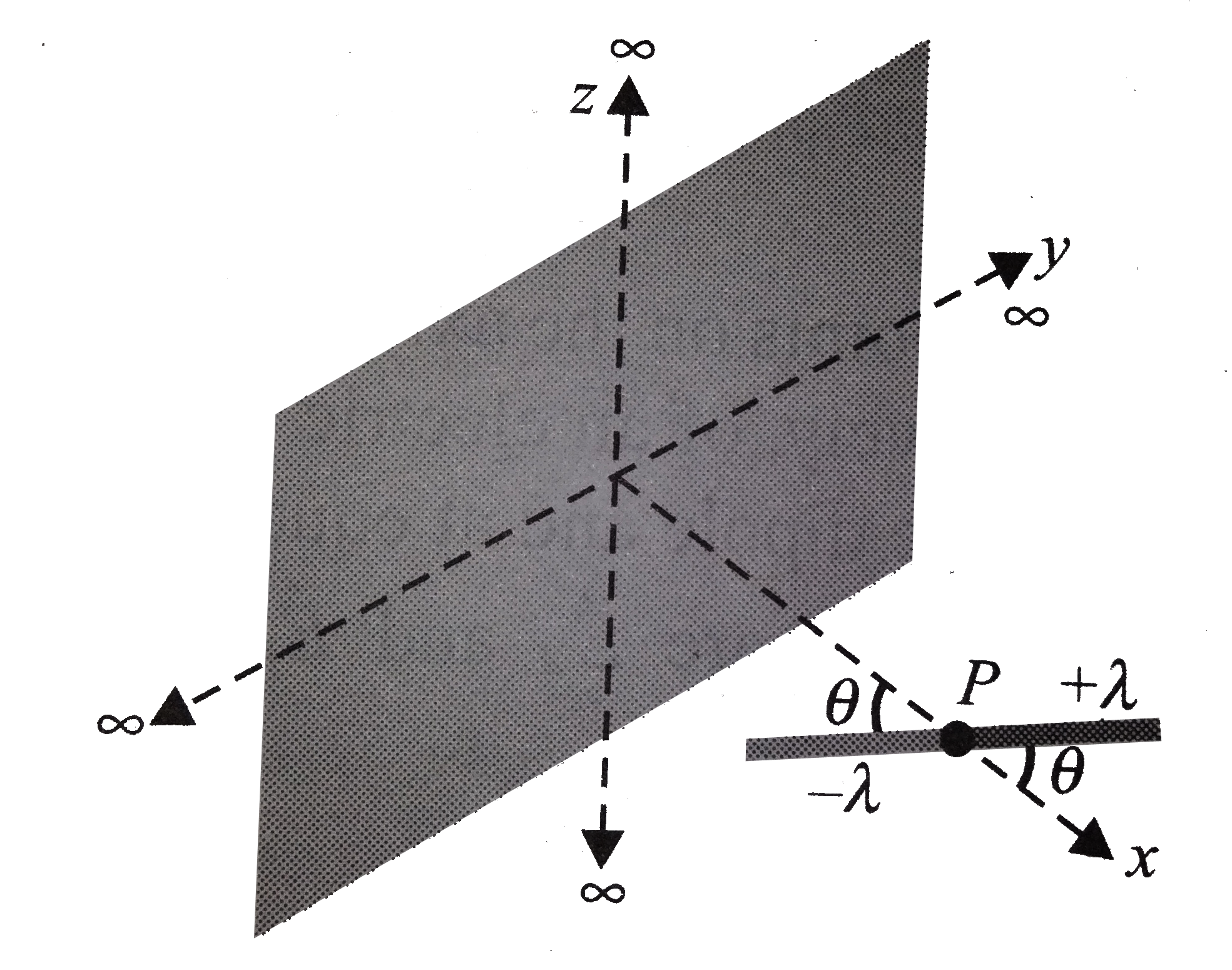
View Solution
Single Correct questions and complete solutions for chapter COULOMB LAW AND ELECTRIC FIELD of CENGAGE PHYSICS (HINGLISH) of Class 12